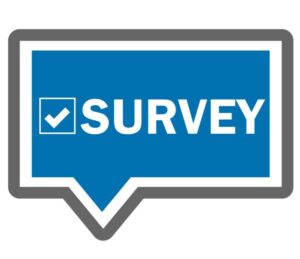The Ohio Economic Development Association (OEDA) is excited to share the results of our first annual member survey, officially launched on Friday, November 15, 2024. Initially set to close on Friday, December 6, the survey remained open until Thursday, December 12, to maximize member participation. This comprehensive 25-question survey, with an average completion time of 21 minutes, was designed to gather invaluable insights from our members. The feedback collected will play a crucial role in shaping OEDA’s strategic planning, evaluating organizational performance, and guiding our programming initiatives for 2025.

The Full Report
Download the report here: Member Survey Report
Top 20 Takeaways
Here are twenty of the top takeaways from the report:
Response Rate & Profile
1. Exceptional Member Engagement: The 45% response rate (267 of 600 members) is remarkably high compared to typical survey benchmarks of 10-30%, indicating strong member investment in the organization’s future.
2. Membership Demographics: Almost half of the respondents were employed by Local Economic Development Organizations (48%), with Regional Economic Development Organizations in second place (20%), with a fairly even distribution across experience levels, geography, and community type.
3. Small vs. Large Community Balance: There’s a notable split in service areas, with 44% serving populations >500k and 46% serving <200k, indicating a need to balance programming for both large and small community needs.
Member Satisfaction
4. Strong Overall Satisfaction: The organization has achieved a good Net Promoter Score of 45 and high satisfaction ratings across most areas (4.1-4.2 out of 5.0), though advocacy scores are lower at 3.7.
5. Strong Leadership Confidence: There’s notable enthusiasm for the new leadership, with multiple mentions of positive sentiment about the new direction and renewed vision across various sections of the survey.
General Feedback
6. Professional Development Gap: There’s a clear demand for more specialized and advanced education content, particularly for mid-career professionals, with many members noting current content can be too basic for experienced professionals while valuable for newcomers.
7. Regional Programming Need: There’s significant demand for more regional programs and networking events (25 mentions in “Programs to Start”), with members wanting more opportunities outside Columbus and better regional representation.
8. Newsletter Success: The OEDA Express Newsletter is a recent addition receiving consistently positive feedback, though some suggest reducing frequency to biweekly to optimize content density.
9. Cost Sensitivity: Throughout various sections, there are recurring mentions of cost considerations, particularly for smaller organizations, suggesting a need for tiered pricing or more affordable options for certain programs.
Member Value & Priorities
10. Networking Most Important: Networking and peer connections are overwhelmingly valued by members, ranking highest (5.5/7.0) among membership benefits, with the Annual Summit being one of the most valued specific programs (3.4/4.0).
11. Critical Infrastructure Focus: Energy and infrastructure emerged as the top development priorities for 2025 (both 3.9/5.0), followed closely by workforce development and housing (both 3.8/5.0).
12. Emerging Topic Areas: Housing development and energy/utilities infrastructure have emerged as critical new areas of interest, reflecting changing economic development priorities.
13. Policy Impact Priority: Members rate policy creation and advocacy as top priorities (4.1/5.0), indicating strong support for OEDA’s renewed focus on advocacy efforts.
14. DEIB Progress Indicators: There’s been a slight uptick in DEIB importance ratings from 2022 to 2024 in professional and personal environments (from 3.5 to 3.7 and 3.6 respectively), though overall DEIB resource demand remains stable at 3.3/5.0.
Formats & Topics
15. Format Flexibility Desired: While in-person events remain most popular (63%), there’s strong demand for hybrid options (52%), suggesting a need for more flexible programming formats.
16. Training Format Issues: There’s some feedback about course format and scheduling concerns, particularly around the Basic Course, with requests for more breaks, interactive elements, and flexible scheduling options.
17. AI Interest Dominates Tech Needs: Artificial Intelligence emerged as the most requested technology topic (45 mentions), significantly outpacing other tech interests like data analytics (15 mentions) and GIS (10 mentions).
18. Resource Constraints: Funding and financial resources are the biggest challenges for EDO management (60% of responses), followed by politics and government relations (50%).
Member Engagement
19. Committee Interest Distribution: While there’s strong interest in policy/legislative (56 responses) and professional development committees (54 responses), there’s notably less interest in fundraising (4 responses) and communications roles (14 responses).
20. Workforce Development Expertise: This emerged as the top area where members feel they have expertise to share (20 mentions), followed by Site Readiness (15 mentions), BR&E (12 mentions), and Project Financing (12 mentions), suggesting potential for peer-led programming in these areas.